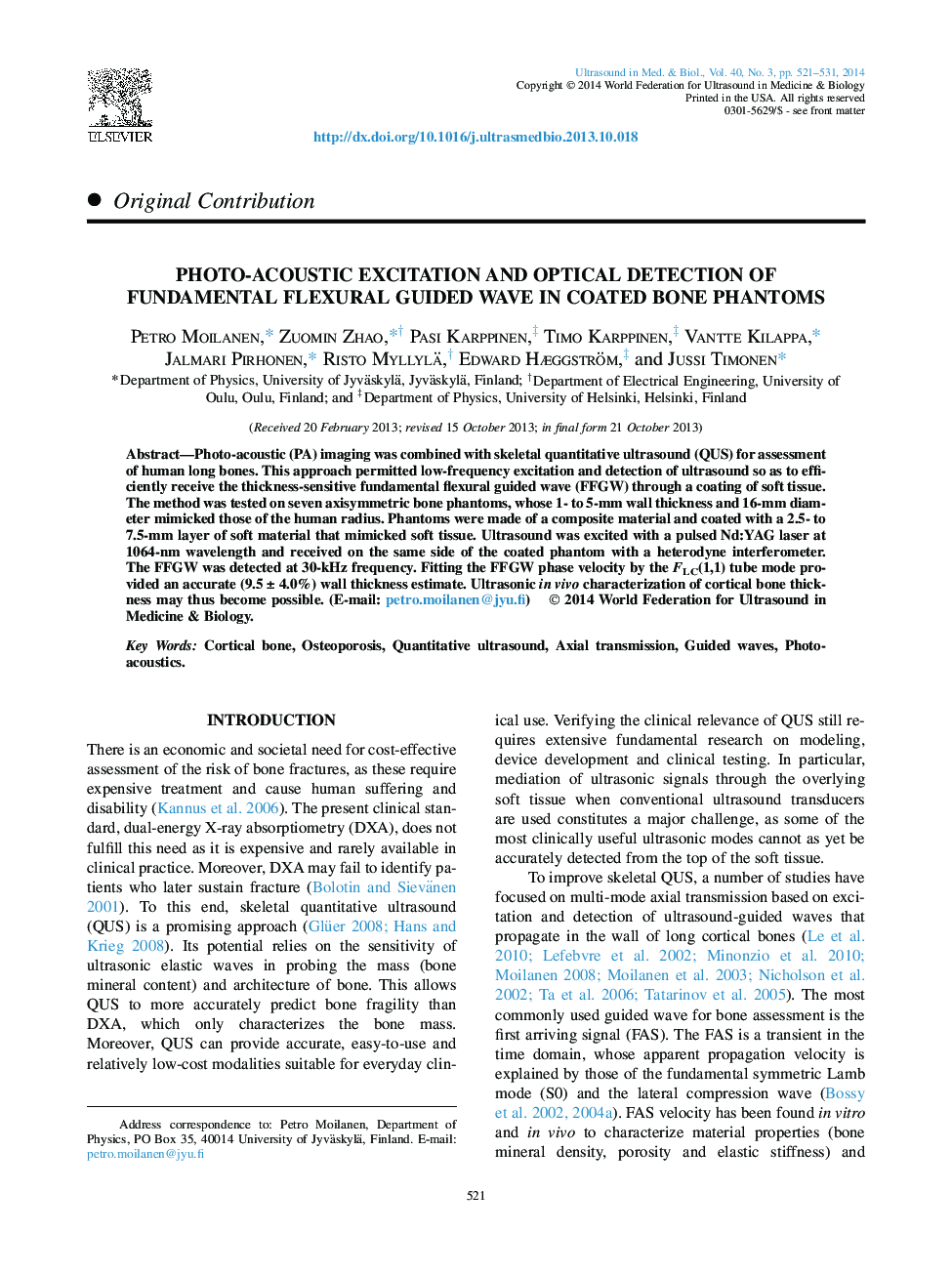| Article ID | Journal | Published Year | Pages | File Type |
|---|---|---|---|---|
| 10691791 | Ultrasound in Medicine & Biology | 2014 | 11 Pages |
Abstract
Photo-acoustic (PA) imaging was combined with skeletal quantitative ultrasound (QUS) for assessment of human long bones. This approach permitted low-frequency excitation and detection of ultrasound so as to efficiently receive the thickness-sensitive fundamental flexural guided wave (FFGW) through a coating of soft tissue. The method was tested on seven axisymmetric bone phantoms, whose 1- to 5-mm wall thickness and 16-mm diameter mimicked those of the human radius. Phantoms were made of a composite material and coated with a 2.5- to 7.5-mm layer of soft material that mimicked soft tissue. Ultrasound was excited with a pulsed Nd:YAG laser at 1064-nm wavelength and received on the same side of the coated phantom with a heterodyne interferometer. The FFGW was detected at 30-kHz frequency. Fitting the FFGW phase velocity by the FLC(1,1) tube mode provided an accurate (9.5 ± 4.0%) wall thickness estimate. Ultrasonic in vivo characterization of cortical bone thickness may thus become possible.
Related Topics
Physical Sciences and Engineering
Physics and Astronomy
Acoustics and Ultrasonics
Authors
Petro Moilanen, Zuomin Zhao, Pasi Karppinen, Timo Karppinen, Vantte Kilappa, Jalmari Pirhonen, Risto Myllylä, Edward Hæggström, Jussi Timonen,
